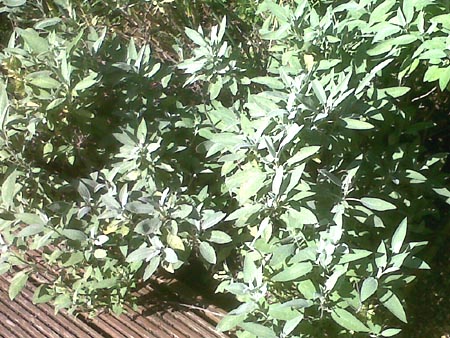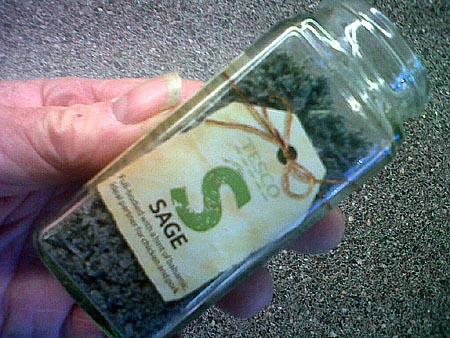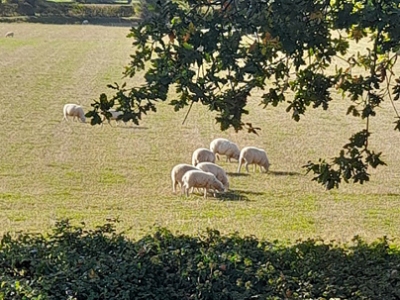Many people are put off making their own dried sage because they think the process involved is too complex.
Admittedly it does require the application of certain techniques which can at first seem daunting, in terms of picking the herb, sticking it in the oven and then scrunching up the baked leaves.
But if the actual methodology can be mastered, the thrill and satisfaction one finds in the actual scrunching of the actual baked sage leaves themselves is actually one of the actual delights of actual modern living.
Ingredients
100 sage leaves
These are normally found on sage plants and can be easily picked by grabbing the sage bush and pulling them off. This can be done either individually or by the handful – use whichever method you find suitable. If your goal is to make large quantities of dried sage, consider the use of garden shears or, if you decide on preparing particularly large quantities, consider hiring a fleet of combine harvesters.

Recipe
Lay out the sage leaves on a baking tray. Personally I prefer a herringbone pattern, allowing the heat to pass gently over the leaves, which experience no pain but are simply sent to sleep as they rest on the tray. I know some people use zigzag patterns or a kind of Jackson Pollock approach – these have their merits and so it may be worth experimenting.

The next stage is to put the tray, along with the leaves pre-positioned on it, into the oven. I know from previous experience that omitting this stage produces quite poor results.
The oven needs to be pre-heated to 80 degrees Centigrade, or 194 Kilometres in metric measurement.

Leave the sage in the oven for roughly sixty minutes to an hour.
Sage is used throughout industry in many important processes. In the chemical industry,  for instance, it is added to people’s baked potatoes in the Baked Potato Making process of staff canteens. The world of accountancy is almost entirely dependent on the herb, of course. And not many people realise that sage is a key constituent of the sage and onion stuffing that we all know so well.
for instance, it is added to people’s baked potatoes in the Baked Potato Making process of staff canteens. The world of accountancy is almost entirely dependent on the herb, of course. And not many people realise that sage is a key constituent of the sage and onion stuffing that we all know so well.
After 3,600 seconds, the sage should be ready.

On removal from the oven, you’ll notice that the leaves have shrunk and twisted. This is nothing to be depressed about! Life’s too short – there are far more important problems in life than a few baked sage leaves. Try to think positively. Lighten up. What about those poor migrants?
After the leaves have cooled down, the scrunching process can begin. If you’re a novice, it may be worth organising a test scrunch using a side plate and a couple of sample leaves. Once you have mastered the technique, scrunching proper can begin.

As you can see from the above picture, the scrunching process is now in full swing. At the end of all this, a complete dish of scrunched sage is produced.
Here’s one I prepared earlier …

Although it has a very similar appearance, it in fact tastes far better than that stuff you get when you empty out your Hoover bag.
Now comes the question: “How do I store my sage?”. My ‘sagestion’ (get it??!) is to use a Tesco‘s sage jar. Empty out all the sage that’s already in the jar and replace it with your own.

Serving suggestion: try dried sage on your cornflakes, first thing in the morning, for a really unusual start to the day.



































